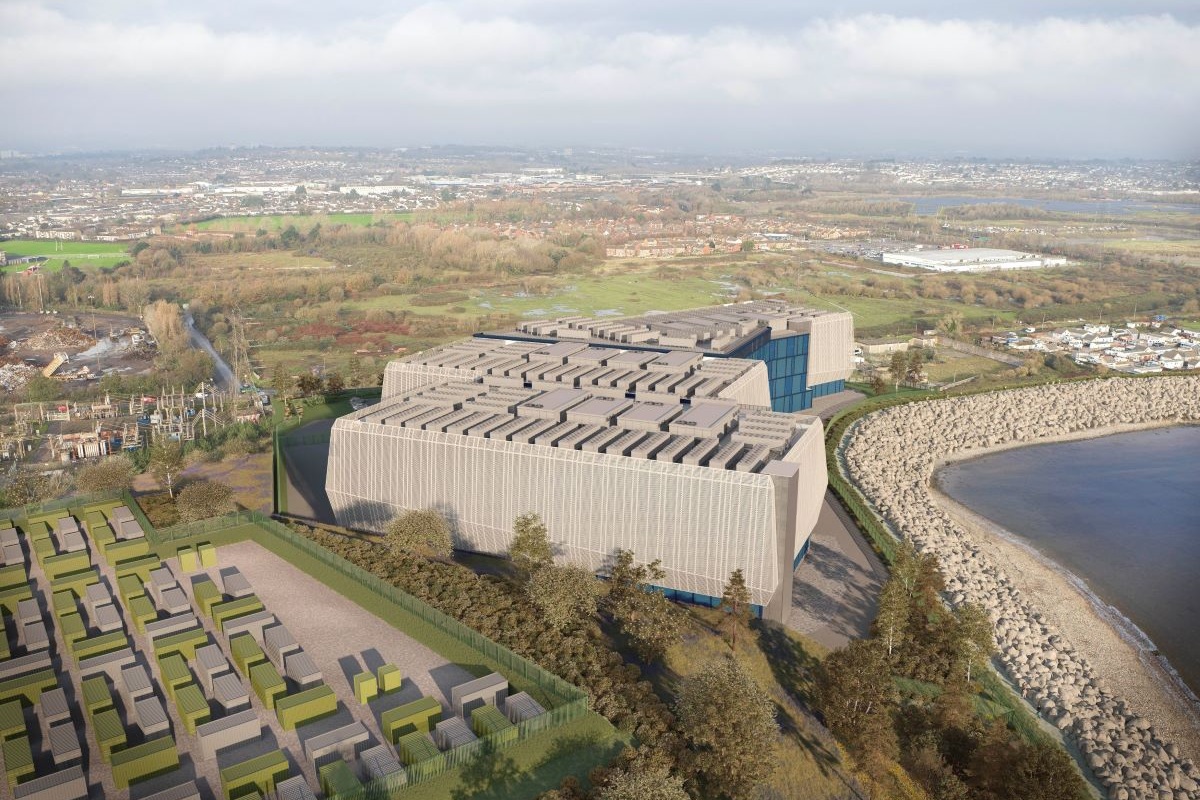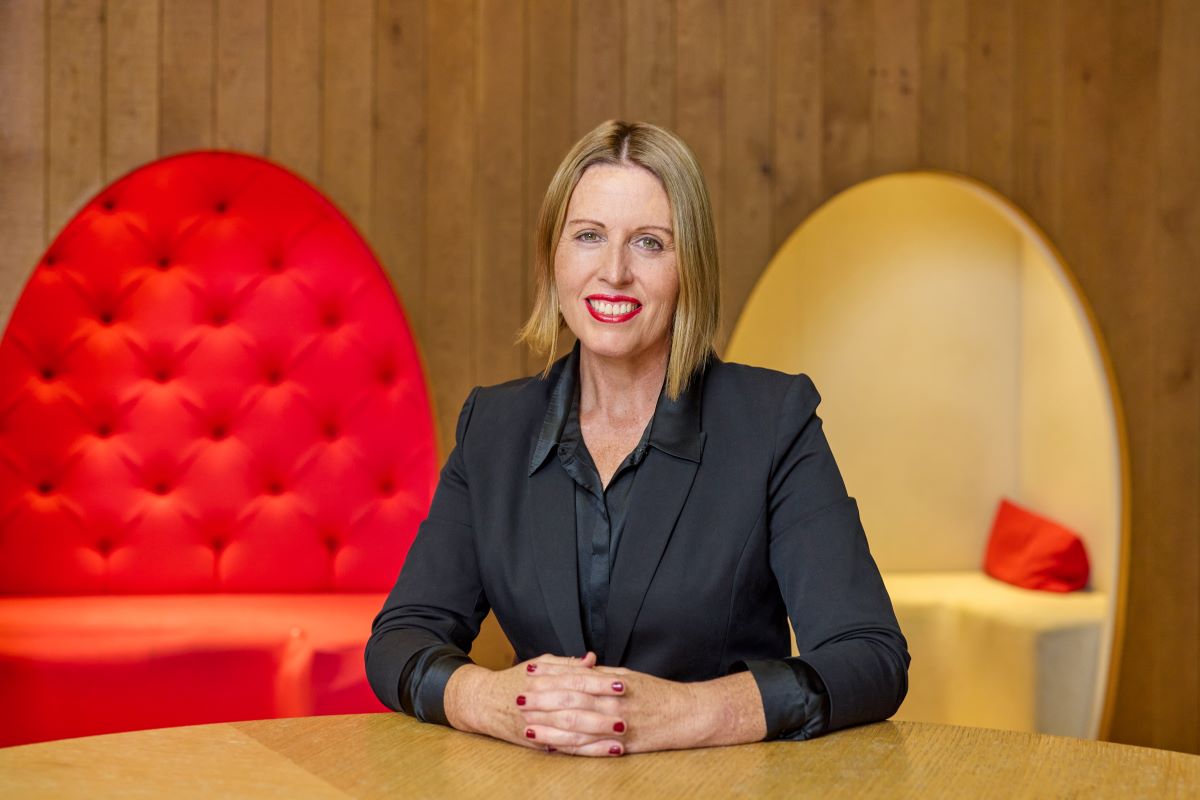Data Centre Operations: Optimising Infrastructure for Performance and Reliability
Artificial Intelligence in Data Centre Operations
Data
Data Centre Operations: Optimising Infrastructure for Performance and Reliability
News
Progress Data Cloud platform launched
Progress, a provider of AI-powered digital experiences and infrastructure software, has announced the launch of Progress Data Cloud, a managed Data Platform as a Service designed to simplify enterprise data and artificial intelligence (AI) operations in the cloud. With Progress Data Cloud, customers can accelerate their digital transformation and AI initiatives while reducing operational complexity and IT overhead.
As global businesses scale their data operations and embrace AI, a robust cloud data strategy has become the cornerstone of success, enabling organisations to harness the full potential of their data for innovation and growth. Progress Data Cloud meets this critical need by providing a unified, secure and scalable platform to build, manage and deploy data architectures and AI projects without the burden of managing IT infrastructure.
“Organisations increasingly recognise that cloud and AI are pivotal to unlocking business value at scale,” says John Ainsworth, GM and EVP, Application and Data Platform, Progress. “Progress Data Cloud empowers companies to achieve this by offering a seamless, end-to-end experience for data and AI operations, removing the barriers of infrastructure complexity while delivering exceptional performance, security and predictability.”
Key features and benefits
Progress Data Cloud is a Data Platform as a Service that enables managed hosting of feature-complete instances of Progress Semaphore and Progress MarkLogic, with plans to support additional Progress products in the future. Core benefits include:
• Simplified operations: Eliminates infrastructure complexity with always-on infrastructure management, monitoring service, continuous security scanning and automated product upgrades.• Cost efficiency: Reduces IT costs and bottlenecks with predictable pricing, resource usage transparency and no egress fees.• Enhanced security: Helps harden security posture with an enterprise-grade security model that is SOC 2 Type 1 compliant.• Scalability and performance: Offers superior availability and reliability, supporting mission-critical business operations, GenAI demands and large-scale analytics.• Streamlined user management: Self-service access controls and tenancy management provide better visibility and customisation.
Progress Data Cloud accelerates time to production by offering managed hosting for the Progress MarkLogic Server database and the Progress MarkLogic Data Hub solution with full-feature parity. Customers can benefit from enhanced scalability, security and seamless deployment options.
Replacing Semaphore Cloud, Progress Data Cloud provides a next-generation cloud platform with all existing Semaphore functionality plus new features for improved performance, security, reliability, user management and SharePoint Online integration.
“As enterprises continue to invest in digital transformation and AI strategies, the need for robust, scalable and secure data platforms becomes increasingly evident,” says Stewart Bond, Vice President, Data Intelligence and Integration Software, IDC. “Progress Data Cloud addresses a critical market need by simplifying data operations and accelerating the development of AI-powered solutions. Its capabilities, from seamless infrastructure management to enterprise-grade security, position it as a compelling choice for organisations looking to unlock the full potential of their data to drive innovation and business value.”
Progress Data Cloud is a cloud-based hosting of foundational products that make up the Progress Data Platform portfolio.
Progress Data Cloud is now available for existing and new customers of the MarkLogic and Semaphore platforms.
Simon Rowley - 24 January 2025
Data Centre Build News & Insights
Data Centre Projects: Infrastructure Builds, Innovations & Updates
Data Centres
Hyperscale Data Centres: Scale, Speed & Strategy
News
RWO wins ‘next generation’ data centre work
North East engineer, RWO, has won work to support the development of the first of a new generation of data centres, strengthening its position as a growing provider of services to the sector.
The Newcastle-based firm is providing an undisclosed package of civil, structural and geo environmental engineering services for the Latos Data Centres hyperscale data centre in Cardiff, a Tier III asset designed to meet the needs of the most demanding global technology companies.
The move follows the Stockton-based IT services and consulting specialists’ announcement to deliver 40 new data centres across the UK by 2030. Cardiff will be the first of its data centres to go fully live later this year, and it's set to offer a total of 90MVA across 50,400 square metres of floor space.
Power for the site will come from a 100% renewable energy supply from the National Grid, supported with a backup feed from the neighbouring 1000MW Tremorfa Energy Park - which is one of the world’s largest battery energy storage facilities.
RWO’s work, which is being undertaken in conjunction with Teesside architect, Create Architecture, sees the provision of engineering expertise to bring forward state-of-the-art facilities to meet strong demand for domestic data processing and storage capabilities.
The data centre market is poised for significant growth in the coming years, with forecasts indicating a substantial increase in demand, particularly when it comes to Artificial Intelligence (AI) - with the European AI market expected to grow by 25.9% in 2024, with annual growth of 15.9% until 2030.
The Cardiff project comes as RWO continues to expand operations beyond its traditional North of England heartland.
Ross Oakley, Managing Director of RWO, says, “Securing this work is another big step forward for us as we continue to grow our presence in the burgeoning data centre design and build sector. Our involvement through the planning and pre-construction phase, coupled with our in-depth knowledge of highly-specialist industrial and temperature-controlled facilities such as this, has enabled us to bring forward an effective programme of engineering to deliver the project.”
Latos plans to open its purpose-built data centres across the UK by 2030 as part of a mission to enable UK businesses to capitalise on the power of advanced computing, including AI.
For more from Latos Data Centres, click here.
Simon Rowley - 21 January 2025
Artificial Intelligence in Data Centre Operations
Data
Data Centre Operations: Optimising Infrastructure for Performance and Reliability
News
Poor data quality the top obstacle to AI success, report says
The Ataccama Data Trust Report 2025 has identified poor data quality as a critical obstacle to AI adoption. The report states that despite AI's transformative potential, its success depends on trusted, reliable data. A lofty 68% of Chief Data Officers (CDOs) cite data quality as their top challenge, with only 33% of organisations making meaningful progress in AI adoption.
Conducted by Hanover Research with insights from 300 senior data leaders, the report underscores the urgency of addressing systemic issues like fragmented systems and governance gaps. Without resolution, businesses risk stalled innovation, wasted resources, and diminished returns on AI investments.
Other key findings
• 41% of organisations struggle to maintain consistent data quality, directly hindering AI outcomes.• Knowledge gaps around data trust and governance slow progress; education is critical to closing these gaps.• Trusted data drives AI success: High-quality data accelerates decision-making, enhances customer experiences, and delivers competitive advantages.
Policy implications
As the UK accelerates its AI strategy with the newly unveiled AI Opportunities Action Plan, the report highlights a foundational gap organisations must address: data trust. When data is accurate, reliable, and trustworthy, users can be confident in making informed decisions that drive improved outcomes and reduce risk.
• National standards for data quality: The report emphasises the need for unified benchmarks to guide businesses in building AI-ready ecosystems. Creating a National Data Library is a core goal within the UK plan for homegrown AI and regulatory principles - safety, transparency, and fairness - could be operationalised through national data governance benchmarks. These standards would ensure clear compliance guidelines while supporting the UK’s pro-innovation regulatory goals.• Infrastructure modernisation: Legacy systems remain a bottleneck to AI scalability, unable to handle real-time, high-volume data demands. With the commitment to sufficient, secure, and sustainable infrastructure, the UK’s investment in supercomputing and AI growth zones enables continuous data quality monitoring and governance. These advancements create scalable, efficient systems tailored to advanced AI technologies.• Data trust in AI regulation: Embedding governance and automated validation practices into data workflows is crucial for compliance, reliability, and long-term growth. Aligning the UK’s ethical AI initiatives with data trust requirements would ensure AI systems both operate reliably and adhere to safety and transparency principles.
“The report makes one thing clear: enterprise AI initiatives rely on a foundation of trusted data,” says Jay Limburn, Chief Product Officer at Ataccama. “Without addressing systemic data quality challenges, organisations risk stalling progress. The UK’s approach to AI regulation shows how aligning data trust principles with national standards and infrastructure modernisation can deliver tangible results.”
Data trust as the foundation of global AI leadership
The UK’s regulatory progress presents an opportunity to lead in AI innovation. However, even the most ambitious policies risk falling short without prioritising data trust. The Ataccama Data Trust Report 2025 offers a roadmap to embed data trust into the UK’s AI agenda, ensuring ethical, effective initiatives that drive measurable outcomes, including increased AI adoption, enhanced compliance, and competitive advantages.
To download the report in full, click here.
Simon Rowley - 21 January 2025
Data Centres
Hyperscale Data Centres: Scale, Speed & Strategy
News
CapitaLand India Trust signs agreement with global hyperscaler
CapitaLand India Trust (CLINT) has signed a long-term agreement with a leading global hyperscaler for one of CLINT’s data centres under development. With this, CLINT is likely to pre-lease about half of its total gross power capacity under development of around 250 MW.
Gauri Shankar Nagabhushanam, CEO of CapitaLand India Trust Management, says, "CLINT's decision to diversify into critical infrastructure such as data centres is validated by the strong interest shown by hyperscale and enterprise customers and positions us well to capitalise on India’s burgeoning digitalisation needs and drive long-term value for our unitholders. We are on track to complete the development of our data centres in India, accelerate leasing momentum, and unlock value through divestments of partial stakes to strategic investors. With the support of our sponsor, CapitaLand Investment (CLI), we are well-poised to meet the fast-growing demand for data centre capacity in India."
Manohar Khiatani, Senior Executive Director of CLI, who oversees the group’s data centre business and is Chairman of the Trustee-Manager, adds, “India is a core market for CLI and we see strong growth potential across the asset classes that CLINT is active in, including data centres. This agreement with a leading hyperscaler is a milestone and demonstrates our ability to deliver world-class data centre solutions. It underscores our deep in-country expertise and strong vertically-integrated capabilities in acquiring greenfield land; designing, developing and completing construction on schedule; as well as leasing and operating data centres.
"Digitalisation is the global megatrend of our times and CLI has significantly expanded its data centre business and capabilities worldwide in the last few years. With our 27 data centres across the globe offering more than 800 MW in gross power on a completed basis, we are well-positioned to cater to the expansion needs of hyperscalers and enterprises.
“India is seeing a surge in demand for data storage and processing given the significant scale and growth of mobile and internet users and businesses widely adopting technologies such as AI and Internet of Things. The rapid pace of digital transformation, increased adoption of cloud computing and the need for data localisation will continue to drive demand for data centres. With 30 years of experience in India, strong technical capabilities and a global customer network, CLI is fully equipped to support CLINT’s growth in India.”
CLINT is developing four state-of-the-art facilities in all the key data centre corridors of India (Mumbai, Chennai, Hyderabad and Bangalore). The company says that this strategic diversification strengthens its portfolio in India, enabling it to deliver quality risk adjusted returns to unitholders.
Simon Rowley - 16 January 2025
Artificial Intelligence in Data Centre Operations
Cyber Security Insights for Resilient Digital Defence
Data
Data Centre Operations: Optimising Infrastructure for Performance and Reliability
News
Tech leaders gather to discuss AI Opportunities Action Plan
Technology industry leaders gathered in London this week to discuss the government’s AI Opportunities Action Plan, launched by Prime Minister, Keir Starmer, earlier this week.
The meeting, which took place on Wednesday at The Savoy Hotel in central London, saw digital experts discuss the implementation and practicalities of adopting the much-hyped initiative, which is backed by a £14bn investment and set to create over 13,000 jobs. Key attendees included Feryal Clark MP, Minister for AI and Digital Government, who summarised the government’s AI roadmap, and Steven George-Hilley, Founder of Centropy PR.
Speaking at the event, John Lucey, VP EMEA North for Cellebrite, commented, “We’ve seen the importance of AI and digital policy this week with the launch of the AI Opportunities Actions Plan poised to position the UK as a global AI leader. Data will play a central role in Britain’s AI future, requiring comprehensive data management systems and data privacy protocols to ensure that AI is trained on trustworthy data and that data inputs don’t breach privacy laws.
“In key sectors such as policing and defence, for example, organisations need to be able to trust AI systems to deliver accurate results in a safe manner, maintaining client confidentiality while automating manual processes to drive efficiencies. For AI to be truly successful, it will require investment in data practices and training.”
Meanwhile, cyber expert, Andy Ward, SVP International for Absolute Security, stated, “As the UK positions itself as a global AI leader, it’s important that a security-first approach is taken to AI innovation and development to mitigate cyber risks. AI-powered threats are growing increasingly sophisticated, targeting sensitive data from public sector bodies and high-profile individuals, right the way down to small businesses.
“Recognising these threats and building cyber resilience frameworks to protect critical IT systems can help organisations to remain operational in the face of threats, allowing them to push forward with innovative AI solutions while limiting potential risks.”
Ben Green, Chief Revenue Officer at adCAPTCHA, observed, “The evolution and widespread adoption of AI is showing no signs of slowing down, requiring collaboration between the public sector and industry to shape the UK’s AI future. There’s no question of the benefits that AI can bring, but we must also be mindful of the risks, with trends such as AI-enabled bot attacks continuing to threaten businesses and drain marketing revenues through manipulating ad auctions.
“Understanding the threats that AI could pose, as well as where it can be a vital solution, is crucial to the UK’s ambitious AI leadership.”
Simon Rowley - 16 January 2025
Artificial Intelligence in Data Centre Operations
Data Centre Operations: Optimising Infrastructure for Performance and Reliability
Data Centres
Industry reacts to AI Opportunities Action Plan
Following yesterday's news about the Government unveiling a new AI Opportunities Action Plan, the industry has naturally been swift to react. Here's a round-up of observations from across the sector:
• Mark Yeeles, Vice President, Secure Power division, Schneider Electric UK & Ireland, says, “The UK has long held a rich history of technology leadership and innovation, and the recommendations within the Government's new AI Opportunities Action Plan present an ambitious but essential strategy to accelerate sustainable economic growth. In many respects, it is a crucial first step towards a more digitally driven future, enabled by AI.
“I, for one, am delighted to see further recognition of data centres as Critical National Infrastructure, and of their pivotal role in providing the secure, sustainable, and resilient infrastructure foundations that are essential to the countries AI success.
“Indeed, the proposed development of AI Growth Zones (AIGZs) presents a logical and effective way to fast-track new AI infrastructure, and to co-develop it with distributed energy resources - addressing the many power challenges that have historically hindered national developments.
“What’s critical is that security, sustainability and efficiency remain at the forefront of these developments, and that we continue to create strategies to decouple AI and data centre growth from power consumption, while reducing the technologies demand on the grid.
“Additionally, to meet and exceed our ambitions around AI leadership, it’s essential we tackle the skills gaps across several key areas connected to AI, including data centres and digital infrastructure, renewable power, sustainability, and engineering.
“We at Schneider Electric are therefore not only glad to see the Government taking proactive steps to address the skills shortage at an industry-level by setting targets to train tens of thousands of AI professionals by 2030, but to see its plans to expand education pathways into AI and to teach higher-education students’ a host of industry-relevant skills.
“Further, addressing the diversity issue at root and branch is vital to the future of the UK’s technology industry, and it’s excellent to see the acknowledgment of this within the plan.”
• Dame Dawn Childs, CEO of Pure DC, comments, “Pure DC welcomes the UK Government's AI Opportunities Action Plan, which underscores the nation's commitment to advancing artificial intelligence. The establishment of AI Growth Zones, such as the one in Culham, Oxfordshire, is a significant step toward accelerating the development of essential infrastructure.
“As a leading data centre provider, Pure DC recognises the importance of translating ambitious plans into tangible outcomes. The successful application and delivery of infrastructure depend on close collaboration between government, industry, and local communities. By aligning these efforts, we can create data centres that not only meet the evolving growth in capacity sought by technology firms, but also respect and actively benefit the communities they serve.
“We are particularly encouraged by the plan's focus on creating jobs and fostering innovation in de-industrialised areas. This aligns with our commitment to engaging with local stakeholders to drive economic development and ensure our projects deliver long-term value for communities.
“By working together, we can ensure that the UK remains at the forefront of AI and technology, creating a thriving environment for innovation and investment.”
• Robin Ferris, AI Lead at digital infrastructure provider, Pulsant, observes, "It takes a long time to plan and build the digital infrastructure that supports AI technology, so the announcement of dedicated AI Growth Zones is fantastic news. But for this to really work, the plan needs to think about the different needs of AI. Training large language models (LLMs) can be more flexible with where it happens, but AI inference – the bit where we actually see AI’s real value – works better when it’s closer to major economic hubs.
"Organisations have been working hard to create real-world AI applications, and we are at an inflection point where they are now coming into production, but only if the right infrastructure is available – and fast. The need is now, and while the UK has one of the most advanced digital infrastructures in the world, it has to keep pace with businesses' growing needs. That’s why including brownfield sites would be a smart move. Not only can it be more efficient, but it’s also a greener, more sustainable choice.
"Having a spread-out, diverse digital infrastructure across the UK is key to making AI accessible to everyone – not just businesses in specific regions. That way, we can create an environment where innovation thrives everywhere and ideas turn into real-world impact faster."
• Tom Whittaker, Director at UK law firm, Burges Salmon, says, “The AI sector will be looking forward to the Spring 2025 Spending Review and the further publications listed in the plan to see what the plan looks like in practice. The plan reflects the public sector's cautious optimism about AI.
“In fact, Government is doing more for the AI sector than what's set out in the AI Opportunities Action Plan. For example, the plan does not refer to the Government's push for public sector organisations to publish on a register where they are developing or using AI. That register shows that there is a wide range of potential uses of AI across the public sector. We can see from research and public registers of AI development and use that there is a great deal of enthusiasm across the public sector to use AI to improve public services.”
• Rupert Bedell, CEO at Fasthosts, comments, “Data centres are the engines that will drive the AI Opportunities Action Plan into reality, but their development comes with significant environmental consequences. Managing their energy demands will define whether this AI plan will be a sustainable path forward.
“The proposed AI Energy Council must lead in establishing robust standards for energy efficiency and renewable energy use in new data centres. Equally, upgrading existing facilities with advanced technologies and modular designs will be essential to reducing their environmental impact. Relying solely on carbon offsets will not be enough, as true sustainability requires meaningful changes to how data centres are built and maintained throughout their lifecycle.
“For AI to truly benefit our society, we must address its environmental footprint head-on. Data centres have a unique opportunity to set the benchmark for how innovation and environmental responsibility can coexist.”
Simon Rowley - 14 January 2025
Artificial Intelligence in Data Centre Operations
Cyber Security Insights for Resilient Digital Defence
Data Centre Operations: Optimising Infrastructure for Performance and Reliability
Data Centre Security: Protecting Infrastructure from Physical and Cyber Threats
News
PM unveils AI Opportunities Action Plan
The Prime Minister has unveiled the Government’s AI Opportunities Action Plan, committing £14 billion in investment into ‘game-changing’ artificial intelligence and creating 13,250 jobs.
The IMF estimates that AI could increase productivity across the UK by as much as 1.5 percentage points each year, if the technology is fully embraced. These gains may be worth an average of £47 billion to the UK economy every year for over a decade.
As part of the plan, the government is creating new AI Growth Zones to fast-track the building of AI infrastructure, starting in Culham and Oxfordshire. These zones will speed up planning permission and generate energy connections needed to power AI.
Prime Minister Keir Starmer says, “Artificial Intelligence will drive incredible change in our country. From teachers personalising lessons, to supporting small businesses with their record-keeping, to speeding up planning applications, it has the potential to transform the lives of working people.
“But the AI industry needs a government that is on their side; one that won’t sit back and let opportunities slip through its fingers. And in a world of fierce competition, we cannot stand by. We must move fast and take action to win the global race.”
The AI Opportunities Action Plan takes forward the 50 recommendations set out by AI expert Matt Clifford, providing the full support of the government.
The plan re-enforces the UK commitment to become a global leader in AI, learning from the US and EU’s approach to lead innovation and deliver long-term stability for businesses.
Sachin Agrawal, UK Managing Director for Zoho, comments, “Artificial Intelligence is already having a transformative impact on people and businesses, driving efficiencies across areas such as data analysis, fraud detection and forecasting which make a significant difference to people’s lives. The commitment to investment and support in the AI Opportunities Action Plan is hugely encouraging, demonstrating the UK’s ambition as a global AI leader and instilling confidence in businesses to turbocharge innovation.
“As part of this innovation push, it is important for the UK to understand how AI regulation and data privacy continue to challenge businesses developing and implementing AI systems. In 2024, multi-agent AI emerged as a significant trend by enabling the collaboration between specialised agents to handle complex workflows in enterprise businesses where structured information and datasets are critical for context. No comprehensive frameworks have been enacted yet in the UK, although renewed commitments such as this and continued efforts indicate the growing recognition of responsible AI governance. According to our Digital Health Study, 78% of businesses have already used AI or are planning to invest heavily in the technology.
“As businesses take the next steps of AI adoption, fuelled by this landmark policy, they should be guided by the government, regulators and educators under AI frameworks that promote the safe and ethical development and usage of AI systems.”
The Prime Minster highlighted the transformative role that AI can play in driving public sector efficiency, saving time on admin that can be reassigned to improving public services.
Speeding up planning consultations to get Britain building, faster and more accurate medical diagnoses, reducing admin for teachers, and AI analysis of camera footage to improve roads were among the examples given by the Prime Minister on the benefits the plans will provide working people.
As part of the plan, the government is setting up a new team to build the UK’s sovereign capabilities and seize AI opportunities, as well as creating a new National Data Library to securely unlock the value of public data and support AI development.
Andy Ward, SVP International for Absolute Security, comments, “For the AI Opportunities Action Plan to truly deliver the transformative impact we all hope, it is vital that security is at the heart of these developments to ensure that AI systems that are being developed and deployed aren’t posing dangerous security risks. There’s no doubt that AI can bring a wealth of positives to our lives, but there’s a dark side to AI with cybercriminals manipulating it as part of attacks, infiltrating IT systems and increasing the sophistication and volume of attacks.”
“While the intention of becoming a global AI leader is encouraging, it requires the government, NCSC and industry to ensure that AI rollouts consider the security risks posed and put in place safeguards to provide additional business protections. Our research found that over half of CISOs feel that their security team is unprepared for evolving AI-powered threats, and 44% have gone as far as banning their employees from using AI due to the security risks.
“Cyber attacks have long been a case of when, not just if, and with AI positioned to increase the threat volume, taking a proactive approach to building cyber resilience has never been more important. Security teams not only need to identify and prevent attacks, they need the capability to recover when a breach does occur, shutting off compromised systems and restoring operations quickly and securely.”
Simon Rowley - 13 January 2025
Data Centre Operations: Optimising Infrastructure for Performance and Reliability
News
News in Cloud Computing & Data Storage
Google Cloud appoints new regional Vice President
Google Cloud has announced the appointment of Maureen Costello as Vice President, United Kingdom and Ireland (UKI) and Sub-Saharan Africa. In this role, Maureen will oversee the company's sales strategy and operations across both regions.
Maureen brings nearly three decades of industry experience to Google Cloud, having previously served as Corporate Vice President for Industry Solutions Delivery at Microsoft. Prior to her role at Microsoft, she held several leadership positions during her 25-year tenure at Accenture, including Senior Managing Director and Resources Lead for UKI.
"It’s an honour to join Google Cloud at such a pivotal time in its journey," Maureen comments. "We have a tremendous opportunity to help businesses across the UKI and Sub-Saharan Africa harness the full potential of the cloud, from AI and data analytics to cyber security and sustainability. I am eager to build on the strong foundation already in place."
Maureen joins Google Cloud at a key stage in its growth trajectory. The company has recently announced major relationships in the UK with organisations including BT, John Lewis & Partners, Vodafone, and WPP. In Africa, Google Cloud opened its first region in Johannesburg, South Africa, in January 2024, and has committed $1 billion to support digital transformation initiatives across the continent.
"Maureen is a proven leader with an exceptional track record of driving growth and building high-performing teams," notes Tara Brady, President, EMEA, Google Cloud. "Her deep industry expertise and understanding of the unique needs of customers will be invaluable as we continue to expand Google Cloud's presence in these key markets. We are thrilled to welcome her to the Google Cloud EMEA leadership team."
Google Cloud is a new way to the cloud, providing AI, infrastructure, developer, data, security, and collaboration tools built for today and tomorrow. It offers a powerful, fully integrated and optimised AI stack with its own planet-scale infrastructure, custom-built chips, generative AI models and development platform, as well as AI-powered applications, to help organisations transform. Customers in more than 200 countries and territories use Google Cloud as their trusted technology partner.
For more from Google Cloud, click here.
Simon Rowley - 10 January 2025
Data Centre Operations: Optimising Infrastructure for Performance and Reliability
Data Centres
News
News in Cloud Computing & Data Storage
AWS Direct Connect Location available at Telehouse Osaka
KDDI Corporation, parent company to Telehouse, has announced today the availability of an Amazon Web Services (AWS) Direct Connect Location at its Telehouse Osaka data centre in Japan.
Telehouse Osaka customers can now directly access over 240 AWS cloud services, including AWS's generative AI via AWS Direct Connect, a cloud service that links customer networks directly to AWS Regions (data centres) through a dedicated network from Telehouse Osaka. This enables low-latency and secure connections to their own cloud environments.
Telehouse Osaka will reportedly be the first data centre in Japan operated by a Japanese telecommunications company to provide a dedicated connection point to AWS Direct Connect. Globally, this will be the third AWS Direct Connect site to implement the service, following Telehouse PARIS Voltaire and Telehouse London Docklands.
Takeyuki Yanagisawa, General Manager, Connectivity DC Planning Department at KDDI, comments, “The AWS Direct Connect Location at Telehouse Osaka allows for the creation of a secure and private link between AWS cloud services and our customers’ IT systems within the data centre. This setup significantly enhances throughput and ensures stability of our customers’ networks.”
“Additionally, by using the fibre core-based data centre interconnection service in the Osaka Business Park, customers can also access their IT infrastructure from other data centres.”
For more from KDDI, click here.
Simon Rowley - 9 January 2025
Data Centres
Hyperscale Data Centres: Scale, Speed & Strategy
News
Tract Capital introduces data centre development platform
Tract Capital, an alternative asset manager focused on creating businesses that enable rapid scaling of digital infrastructure, has introduced Fleet Data Centers to programmatically meet the next phase of hyperscale data centre growth.
Fleet Data Centers enters the market with a specific focus on mega-scale campuses with a prioritised target of single-user campuses. The Fleet Data Centers team consists of industry veterans who have already made a lasting imprint on the evolution of global digital infrastructure and believe they are uniquely capable of enhancing data centre development scale and operations in the face of rising demand.
Tract Capital CEO and Executive Chairman of Fleet, Grant van Rooyen, comments, “We are focused on meeting the capacity and scale needs of tomorrow. Predictable and flexible data centre delivery on large-scale contiguous campuses is the logical solution for customers trying to navigate divergent demand forecasts.
“The scope of our opportunity is expanding daily as customers search for new models to replace legacy building blocks and to meet the pace of demand for new infrastructure. Chris and I first worked together 26 years ago. I have immense admiration and respect for his body of work, his leadership anchored by a bias for action, and his character. It is a privilege to welcome him to our business family and to entrust the Fleet business into his capable hands.”
Fleet Data Centers intends to build some of the largest data centre campuses in the world, combining gigawatt-level capacity with a campus-based commercial model that gives customers the ability to confidently secure capacity to meet their high-side demand forecasts. Fleet Data Centers’ campuses and operations will be designed in collaboration with customers to deliver seamless augmentation to their existing data centre fleets and access ongoing design innovation to intercept new technologies.
Chris Vonderhaar joins Fleet Data Centers as President, most recently coming from Google Cloud where he served as Vice President of Demand and Supply Management. Prior to his time at Google Cloud, Vonderhaar served in a decade-plus tenure at Amazon Web Services (AWS) where he was responsible for the design, planning, construction and operations of the AWS global data centre platform, including energy and sustainability. Vonderhaar is joined by industry veterans from hyperscalers, wholesale data centre providers, network infrastructure providers and equipment vendors, who have collectively deployed dozens of gigawatts of data centre capacity across hundreds of data centres globally.
Chris states, “Our team has direct insight into the challenges hyperscalers face as they scale. Designing, building and operating these platforms is getting harder while demand is accelerating. Hyperscalers need infrastructure that is going to deliver predictability and flexibility decades into the future. Our collaborative, long-term model backed by our engineering, system and operational excellence positions Fleet Data Centers to be an integrated extension of our customers’ data centre platforms. Grant and the Tract Capital team have been successfully starting new and innovative businesses for decades and have a proven and respected record of success. I am thrilled to be their partner.”
Simon Rowley - 9 January 2025

Head office & Accounts:
Suite 14, 6-8 Revenge Road, Lordswood
Kent ME5 8UD
T: +44 (0)1634 673163
F: +44 (0)1634 673173









